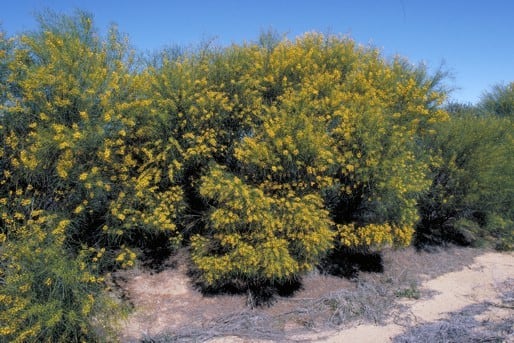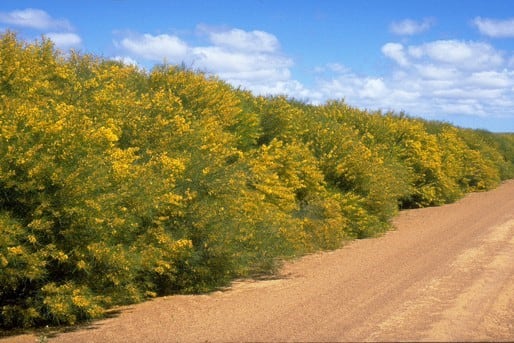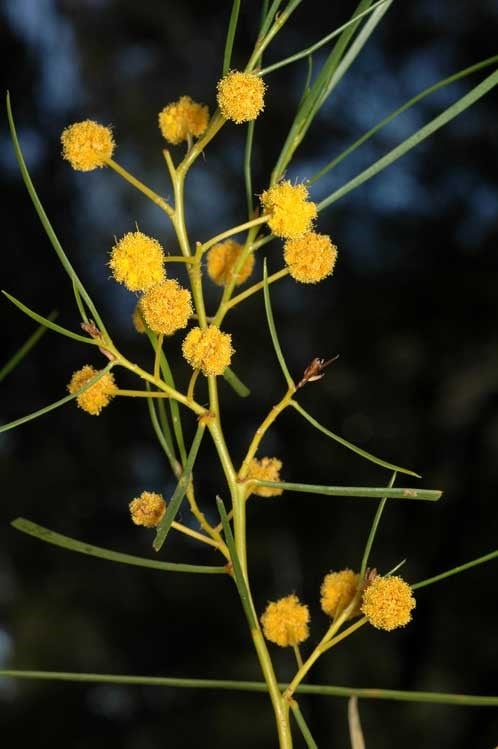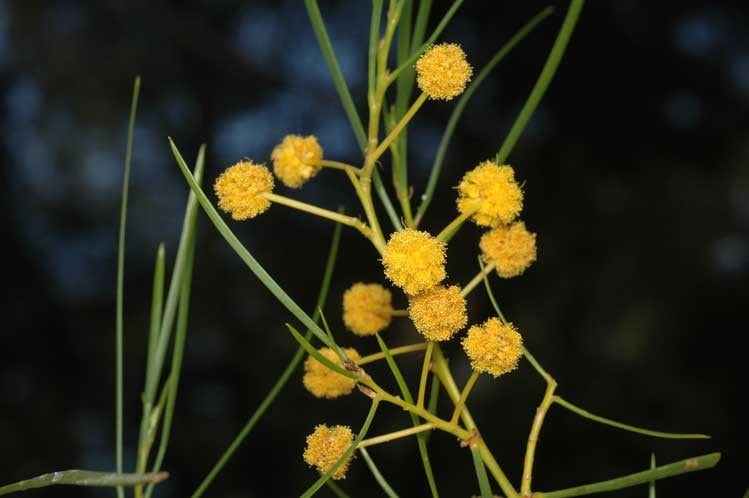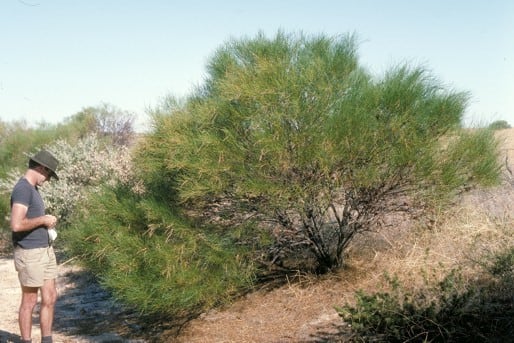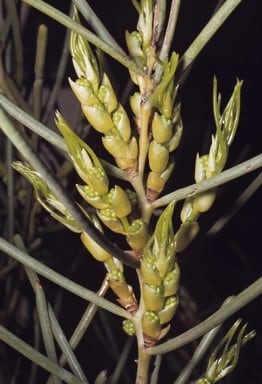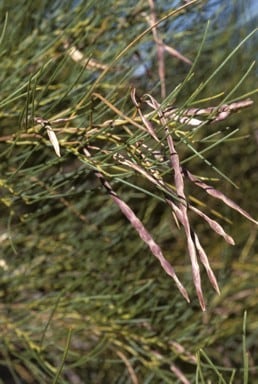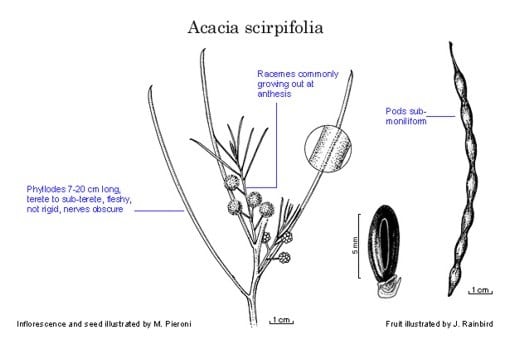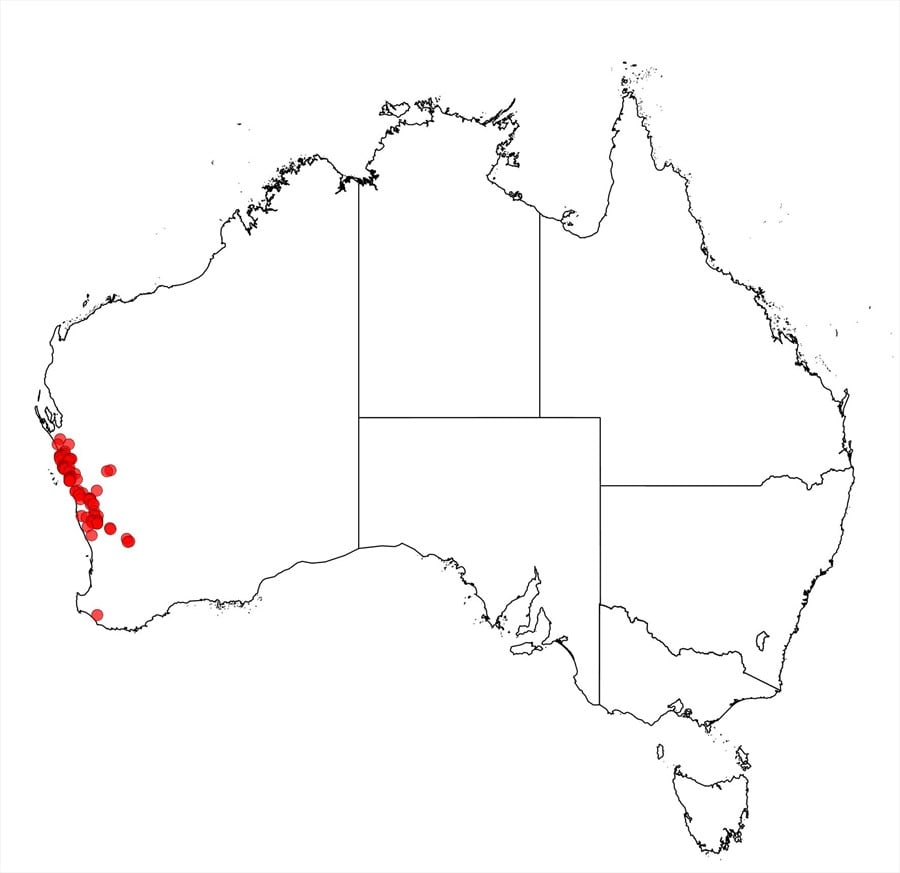Acacia scirpifolia Meisn.
WATTLE
Acacias of Australia
Family
Fabaceae
Distribution
Extending from the Cooloomia Nature Reserve, c. 70 km N of Kalbarri, S to near Moora in south-western W.A.
Description
Dense glabrous shrub or tree, 2–4 m high. Branchlets flexuose. Stipules caducous, obvious on new shoots, 2–6 mm long, scarious, light brown. Phyllodes terete to subterete, sometimes drying ±flat, 7–20 cm long, 1–1.5 mm wide, acute and commonly slightly incurved at apex, not rigid, fleshy, smooth, longitudinally sulcate when dry, obscurely 4-nerved, 1-nerved per face when flat; gland 6–16 mm above pulvinus. Inflorescences 3–6-headed racemes, enclosed when young by conspicuous imbricate scarious striate bracts; raceme axes 1–4 cm long, commonly growing out during anthesis; peduncles 5–13 mm long; heads globular, 5–6 mm diam., 20–30-flowered, golden. Flowers 5-merous; sepals united into a ±truncate calyx. Pods submoniliform, to 16 cm long, 4–5 mm wide, thinly coriaceous-crustaceous, finely longitudinally reticulate. Seeds longitudinal, 5.5–7 mm long, elliptic to narrowly elliptic or narrowly oblong, shiny, black; aril drying yellow-brown.
Habitat
Grows in sand, commonly on road-verges in some areas.
Specimens
W.A.: S of White Peak, L.Diels 3233 (PERTH); Chapman, near Geraldton, L.Diels 3757 (PERTH); Cooloomia Nature Reserve, 14 km WSW of Cooloomia HS, S.D.Hopper 1346 (PERTH); 10.5 km W of Three Springs towards Eneabba, B.R.Maslin 3064 (NSW, PERTH).
Notes
Very close to green phyllode forms of A. blakelyi which has broader, flat, ±coriaceous phyllodes; when phyllodes of A. scirpifolia are flat (from the first or upon drying) they are thicker than in A. blakelyi. Most specimens can be reliably placed using these phyllode characters. In addition to being close morphologically, the ranges of the two species overlap substantially and future studies may show they should be combined. Another, less closely related species, A. sclerosperma subsp. sclerosperma, is superficially similar but its racemes do not grow out, its pods are woody and its seeds are ±spherical with a red aril.
FOA Reference
Data derived from Flora of Australia Volumes 11A (2001), 11B (2001) and 12 (1998), products of ABRS, ©Commonwealth of Australia
Author
B.R.Maslin
This identification key and fact sheets are available as a mobile application:
URL: https://apps.lucidcentral.org/wattle/
© Copyright 2018. All rights reserved.
